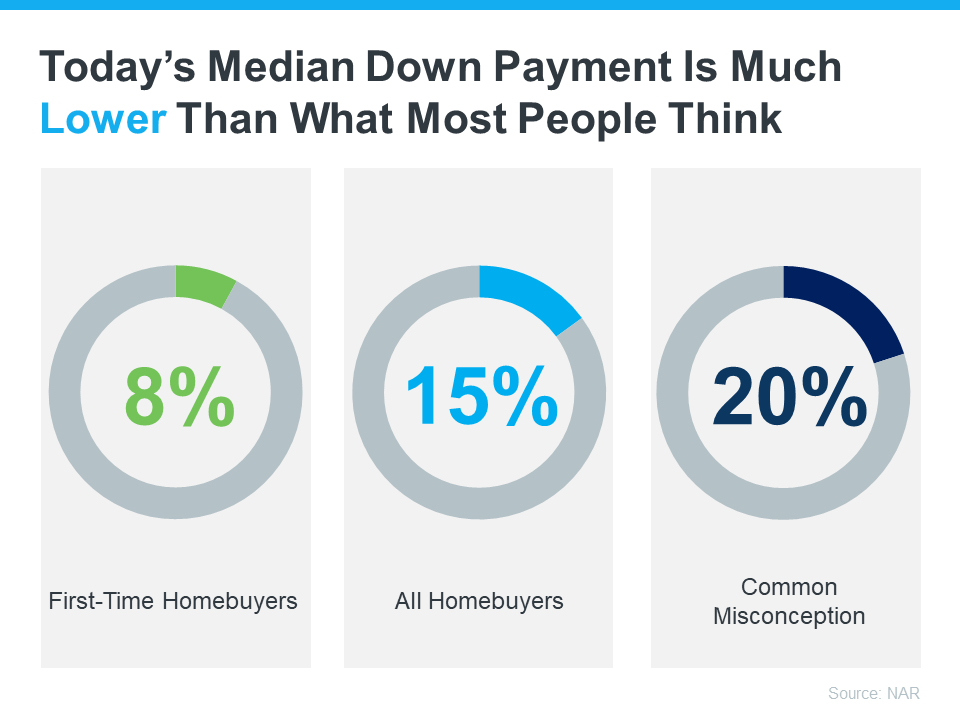
In New York City, the typical down payment a home buyer needs to come up with is 20%. There is no law that a buyer has to put down 20%, but this is the benchmark for conventional financing. Additionally, cooperatives in New York City have their specific down payment, debt-to-income, and cash liquidity after closing requirements. There are situations where you purchase a home, even in a place like NYC, with less than 20% down. Many condos permit you to do 10% down (and sometimes less if it’s FHA-approved). And there’s no set amount required for a single-family house and townhouse.
Down payment Assistance
Your down payment doesn’t have to be a big hurdle to buy a home outside the City. According to the National Association of Realtors (NAR), 38% of first-time homebuyers find saving for a down payment the most challenging. But the reality is, you probably don’t need to put down as much as you think:
Data from NAR shows the median down payment hasn’t been over 20% since 2005. The median down payment for all homebuyers today is only 15%. And it’s even lower for first-time homebuyers at 8%. But just because that’s the median doesn’t mean you must put that much down. Some qualified buyers put down even less.
For example, there are loan types, like FHA loans, with down payments as low as 3.5%, and options like VA loans and USDA loans with no down payment requirements for qualified applicants. But let’s focus on another valuable resource that may be able to help with your down payment: down payment assistance programs.
First-Time and Repeat Buyers Are Often Eligible
According to Down Payment Resource, there are thousands of programs available for homebuyers – and 75% of these are down payment assistance programs.
And it’s not just first-time homebuyers that are eligible. That means no matter where you are in your home-buying journey, an option could be available. As Down Payment Resource notes:
“You don’t have to be a first-time buyer. Over 39% of all [homeownership] programs are for repeat homebuyers who have owned a home in the last 3 years.”
The best place to start as you search for more information is with a trusted real estate professional. They can share more information about what may be available, including additional programs for specific professions or communities.
Additional Payment Resources That Can Help
Here are a few down payment assistance programs that are helping many of today’s buyers achieve the dream of homeownership:
- Teacher Next Door is designed to help teachers, first responders, health providers, government employees, active-duty military personnel, and veterans reach their down payment goals.
- Fannie Mae provides down-payment assistance to eligible first-time homebuyers living in majority-Latino communities.
- Freddie Mac also has options designed specifically for homebuyers with modest credit scores and limited funds for a down payment.
- The 3By30 program outlines actionable strategies to add 3 million new Black homeowners by 2030. These programs offer valuable resources for potential buyers, making it easier for them to secure down payments and realize their dream of homeownership.
- For Native Americans, Down Payment Resource highlights 42 U.S. homebuyer assistance programs across 14 states that ease the path to homeownership by providing support with down payments and other associated costs.
Even if you don’t qualify for these programs, many other federal, state, and local options are available. A real estate professional can help you find the ones that meet your needs as you explore what’s available.
Hedging Rising Interest Rates
Lenders offer interest rate protection programs to provide consumers with a little extra security against rising interest rates during the home buying process.
- Lock-and-shop: Lock in your interest rate for up to 90 days*, even before you find a home.- Choose from one of our eligible fixed- or adjustable-rate loans.
– Your purchase-and-sale agreement must be signed within 30 days of the rate lock, and the loan must close within 90 days of the rate lock.
- Rate protector program: Available on select fixed-rate and adjustable-rate programs, you can lock in your interest rate for up to 360 days for an upfront fee applicable at closing.- Programs that allow a one-time float down to market rates should rates improve.
– Loan must be approved before exercising the float down option and closed within 60 days of float down.
- Extended rate lock without float down: You can also lock in a rate for up to 360 days on select fixed-rate and adjustable-rate programs for an upfront fee.
Key Takeaway
Achieving the dream of having a home may be more within reach than you think, especially when you know where to find the right support. To learn more about your options, let’s connect.
Other educational articles about the market and your home search are under Karen’s Blog. Additionally, explore the search bar for other topics of interest.


